Guns in Lewistown’s Memorial Square
While I was up in Lewistown, PA for my grandfather’s funeral, I took a ride around town with my dad to get some photos of a few of the downtown buildings. My dad got some great nighttime shots, but I turned out to be more interested in getting some daytime shots yesterday, because the dominant feature in the town square is a Civil War monument with some guns on display surrounding it. I had to get a better look at that artillery!
All the guns in the square are real weapons, but two of them may not have ever been fired in anger. We’ll start with those:
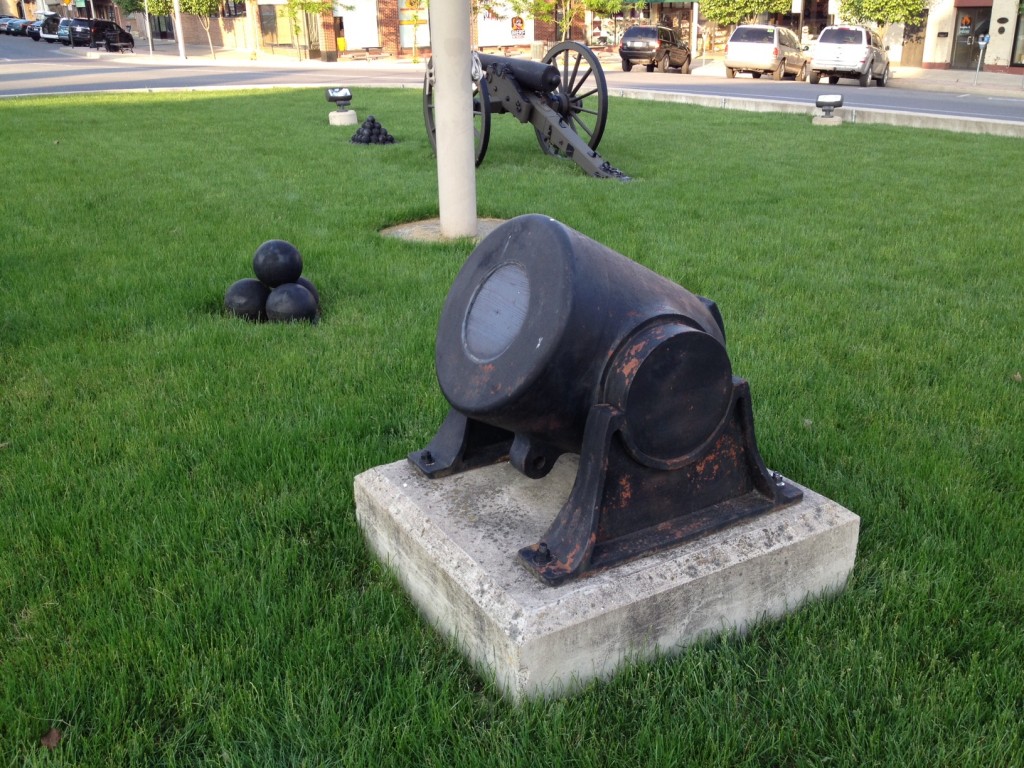
On each of the “skinny” sides of the square (the northwest, and southeast fronts) there are 10-inch siege mortars on display. You can see in the picture above a protrusion from the “bottom” of the weapon with a hole through it – this was used to lift the weapon from its mounts. That being said, it should be on the top – these weapons are mounted upside-down. The stats for both weapons are below:
- “Northwest” Mortar
- Manufacturer – S. McM. & Co.
- Year Built – 1865
- Serial Number – 7
- Weight – 1950 lbs
- Inspector – S.C.L.
- “Southeast” Mortar
- Manufacturer – S. McM. & Co.
- Year Built – 1865
- Serial Number – 23
- Weight – 1959 lbs
- Inspector – S.C.L.
The manufacturer of these weapons is listed on the muzzle as “S. McM. & Co.” this stands for Seyfert, McManus & Company, which made several different models of heavy siege guns for the U.S. Army in Reading, PA about 100 miles or so east of where the guns rest today. They were inspected by “S.C.L.”, or US Army Ordinance officer, Stephen Carr Lyford. Since these weapons were made in 1865, and the war ended in April of that year, I doubt these ever saw active service – they were probably made to fulfill a contract. If either of them did make it to the field, it would probably be the #7 one.
The other weapons in the square are what I was really interested in. These were 12-pounder Napoleons that someone – for some unknown reason – decided to paint black, forever destroying their beautiful bronze patina (though some streaky green shows through a little bit). This is especially sad, I’m sure, for one of these guns.
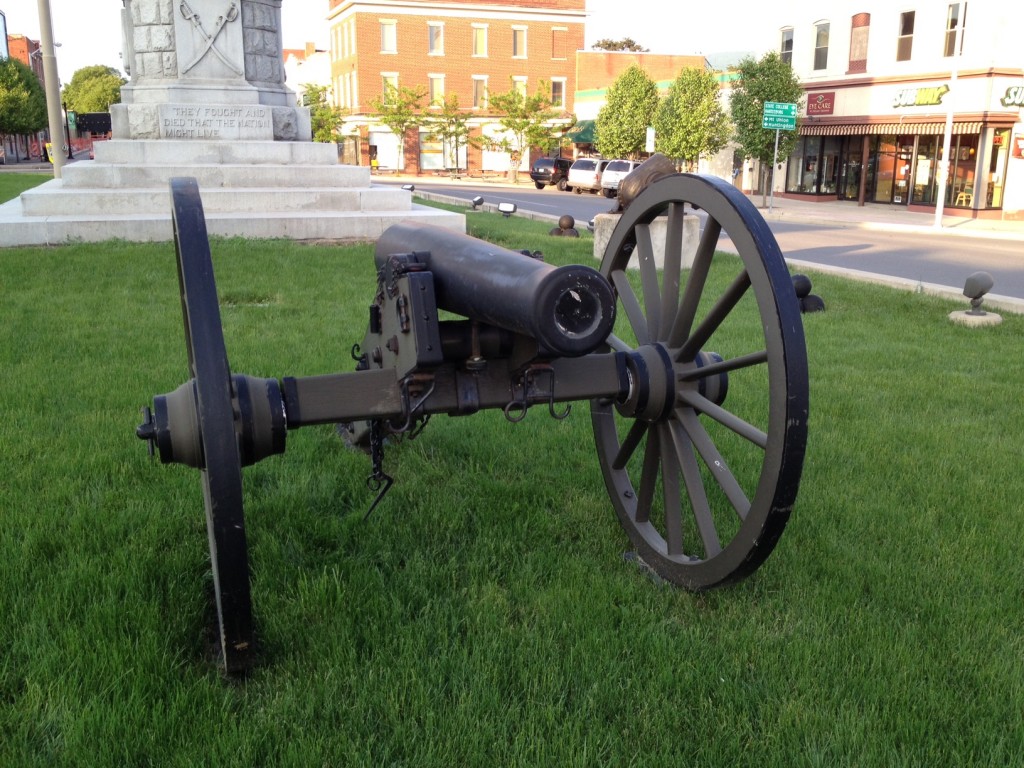
The first of these guns is on the southwest side of the square. Despite being painted black, its markings are still plainly visible:
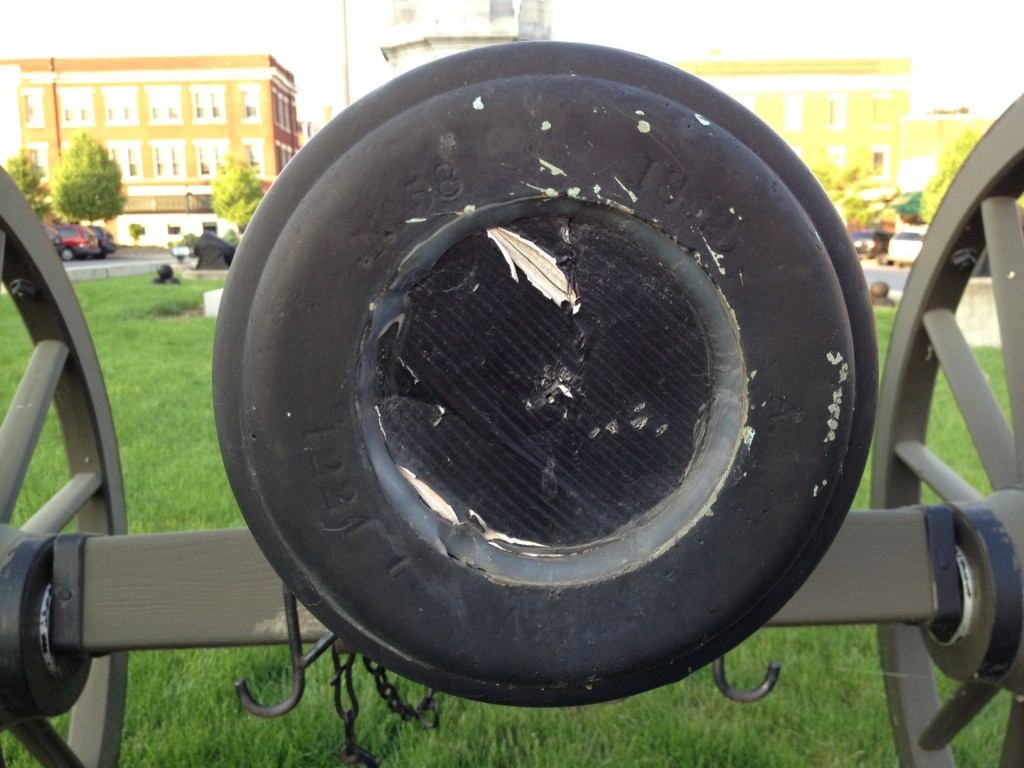
- Manufacturer – A. M. Co.
- Year Built – 1862
- Serial Number – 58
- Weight – 1224 lbs
- Inspector – A. R. D.
As you can see, this gun is exciting for me because it’s certainly possible that it was at Gettysburg. There were 244 12-pounder Napoleons at Gettysburg on both sides, and since this gun was made sometime in 1862 (the Register of Inspections shows that it was inspected and accepted into Federal service on May 31, 1862), it’s absolutely a sure thing that it would have made it to the field by the summer of 1863. The only question is whether this gun went to one of the eastern or western armies. “A. M. Co.” is an abbreviation for Ames Manufacturing Company which still exists today. In fact, you may have used their more recent products in your garden. Their cannon manufacturing operations were headquartered in Chicopee, MA just north of the US Armory at Springfield. The inspector for this piece was Alexander Brydie Dyer, who was the commander of the Springfield armory at the time.
The second Napoleon, on the northeast side, is the one that makes the black paint especially sad. That one is a Revere:
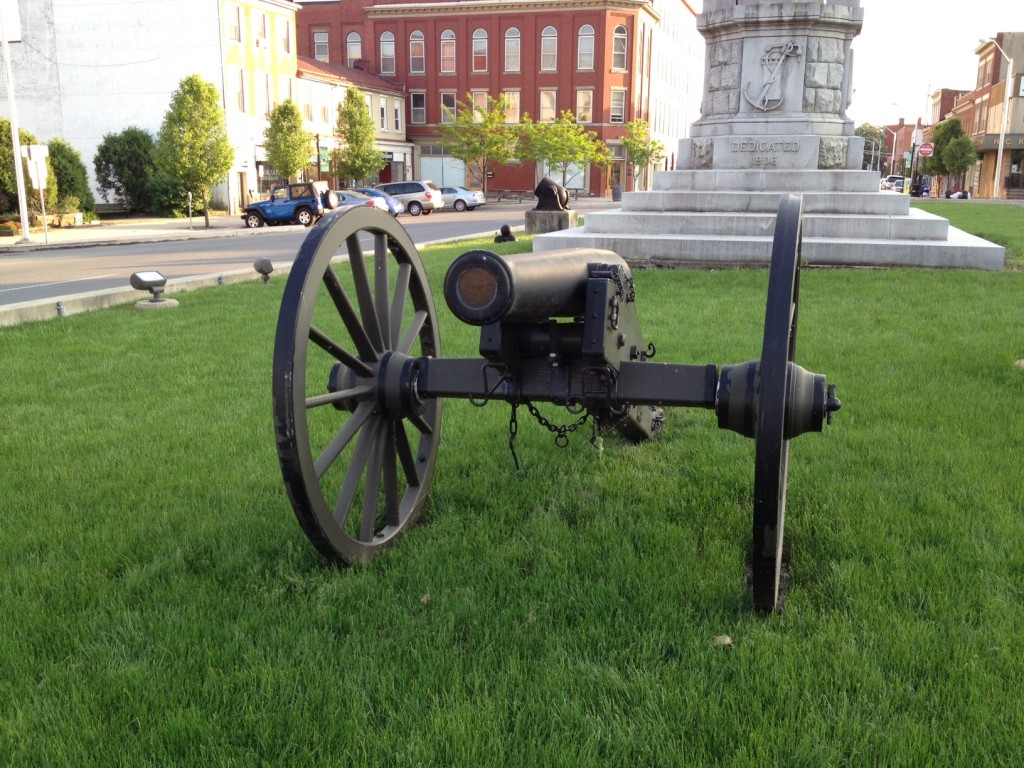
It is gut-wrenching to see this gun painted-over. Every one of the Revere Napoleons that I’ve ever seen has the most beautiful, bright, consistent green patina. It’s the mark of extremely high-quality metals and processes being used to make them. For a reason I will never understand, the people in Lewistown decided that these guns would be better off hiding their brilliant craftsmanship and masquerading as iron weapons.
Despite the abysmally ugly black paint, the markings on the Revere Napoleon here are in great shape:
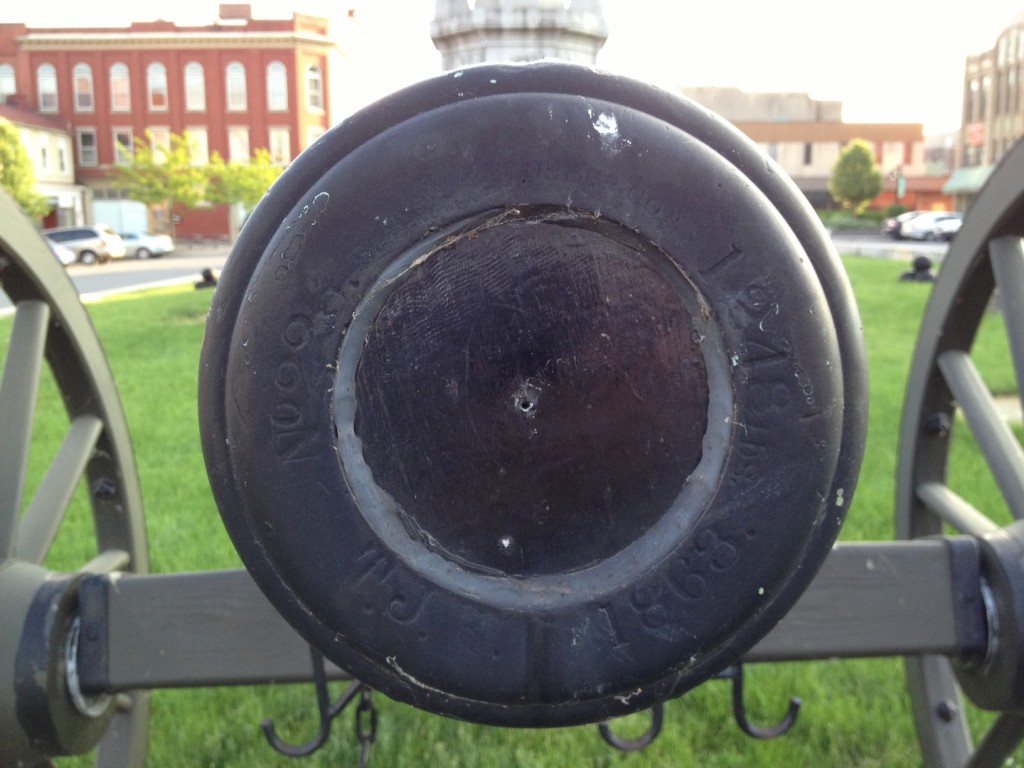
- Manufacturer – Revere Copper Co.
- Year Built – 1863
- Serial Number – 226
- Weight – 1248 lbs
- Inspector – T. J. R.
Once again, we have a gun that could have been at Gettysburg. The Register of Inspections is unclear on this particular serial number, but given the pattern of inspections from previous months, this gun was probably accepted into Federal service sometime in February of 1863, giving it enough time to have made it to the field by that summer. We still have the east or west question just like the Ames Napoleon above, too. The inspector, Thomas J. Rodman – the inventor of the Rodman Gun, and a more efficient type of gunpowder – is one of those legendary ordinance officers in the Civil War.
I’m going to try to dig into these pieces a little further to see if I can find any definitive service history for these serial numbers, but I doubt that any such document exists. We’re left to speculate by ourselves about the work these guns might have done 150 years ago.